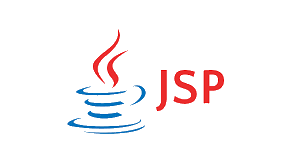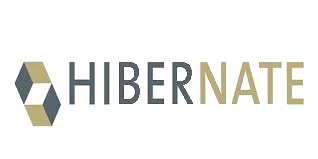Java

Java is a high-level, class-based, object-oriented programming language that is designed to have as few implementation dependencies as possible. It is a general-purpose programming language intended to let programmers write once, run anywhere (WORA), meaning that compiled Java code can run on all platforms that support Java without the need for recompilation. Java applications are typically compiled to bytecode that can run on any Java virtual machine (JVM) regardless of the underlying computer architecture. The syntax of Java is similar to C and C++, but has fewer low-level facilities than either of them. The Java runtime provides dynamic capabilities (such as reflection and runtime code modification) that are typically not available in traditional compiled languages. As of 2019, Java was one of the most popular programming languages in use according to GitHub, particularly for client–server web applications, with a reported 9 million developers.
Java was originally developed by James Gosling at Sun Microsystems (which has since been acquired by Oracle) and released in 1995 as a core component of Sun Microsystems' Java platform. The original and reference implementation Java compilers, virtual machines, and class libraries were originally released by Sun under proprietary licenses. As of May 2007, in compliance with the specifications of the Java Community Process, Sun had relicensed most of its Java technologies under the GPL-2.0-only license. Oracle offers its own HotSpot Java Virtual Machine, however the official reference implementation is the OpenJDK JVM which is free open-source software and used by most developers and is the default JVM for almost all Linux distributions.
 Spring Framework is an application framework and inversion of
control container for the Java platform.
The framework's core features can be used by any Java application, but there are extensions
for building web applications on top of the Java EE (Enterprise Edition) platform.
Although the framework does not impose any specific programming model, it has become popular
in the Java community as an addition to the Enterprise JavaBeans (EJB) model.
Spring Framework is open source.
Spring Framework is an application framework and inversion of
control container for the Java platform.
The framework's core features can be used by any Java application, but there are extensions
for building web applications on top of the Java EE (Enterprise Edition) platform.
Although the framework does not impose any specific programming model, it has become popular
in the Java community as an addition to the Enterprise JavaBeans (EJB) model.
Spring Framework is open source.
 Jakarta Server Pages (JSP; formerly JavaServer Pages) is a
collection of technologies that helps software developers create dynamically generated web
pages based on HTML, XML, SOAP,
or other document types. Released in 1999 by Sun Microsystems, JSP is similar to PHP and
ASP, but uses the Java programming language.
Jakarta Server Pages (JSP; formerly JavaServer Pages) is a
collection of technologies that helps software developers create dynamically generated web
pages based on HTML, XML, SOAP,
or other document types. Released in 1999 by Sun Microsystems, JSP is similar to PHP and
ASP, but uses the Java programming language.
To deploy and run Jakarta Server Pages, a compatible web server with a servlet container, such as Apache Tomcat or Jetty, is required. Architecturally, JSP may be viewed as a high-level abstraction of Java servlets. JSPs are translated into servlets at runtime, therefore JSP is a Servlet; each JSP servlet is cached and re-used until the original JSP is modified.
Jakarta Server Pages can be used independently or as the view component of a server-side model–view–controller design, normally with JavaBeans as the model and Java servlets (or a framework such as Apache Struts) as the controller. This is a type of Model 2 architecture.
JSP allows Java code and certain predefined actions to be interleaved with static web markup content, such as HTML. The resulting page is compiled and executed on the server to deliver a document. The compiled pages, as well as any dependent Java libraries, contain Java bytecode rather than machine code. Like any other .jar or Java program, code must be executed within a Java virtual machine (JVM) that interacts with the server's host operating system to provide an abstract, platform-neutral environment.
JSPs are usually used to deliver HTML and XML documents, but through the use of OutputStream, they can deliver other types of data as well. The Web container creates JSP implicit objects like request, response, session, application, config, page, pageContext, out and exception. JSP Engine creates these objects during translation phase.
 Hibernate ORM (or simply Hibernate) is an object–relational
mapping tool for the Java programming language.
It provides a framework for mapping an object-oriented domain model to a relational
database. Hibernate handles object–relational impedance mismatch problems by replacing
direct,
persistent database accesses with high-level object handling functions.
Hibernate ORM (or simply Hibernate) is an object–relational
mapping tool for the Java programming language.
It provides a framework for mapping an object-oriented domain model to a relational
database. Hibernate handles object–relational impedance mismatch problems by replacing
direct,
persistent database accesses with high-level object handling functions.
Hibernate is free software that is distributed under the GNU Lesser General Public License 2.1.
Hibernate's primary feature is mapping from Java classes to database tables, and mapping from Java data types to SQL data types. Hibernate also provides data query and retrieval facilities. It generates SQL calls and relieves the developer from the manual handling and object conversion of the result set.
 Jakarta Messaging API (formerly Java Message Service or JMS
API) is a Java application programming interface (API) for message-oriented middleware.
It provides generic messaging models, able to handle the producer–consumer problem, that can
be used to facilitate the sending and receiving of messages between software systems.
Jakarta Messaging is a part of Jakarta EE and was originally defined by a specification
developed at Sun Microsystems before being guided by the Java Community Process.
Jakarta Messaging API (formerly Java Message Service or JMS
API) is a Java application programming interface (API) for message-oriented middleware.
It provides generic messaging models, able to handle the producer–consumer problem, that can
be used to facilitate the sending and receiving of messages between software systems.
Jakarta Messaging is a part of Jakarta EE and was originally defined by a specification
developed at Sun Microsystems before being guided by the Java Community Process.
